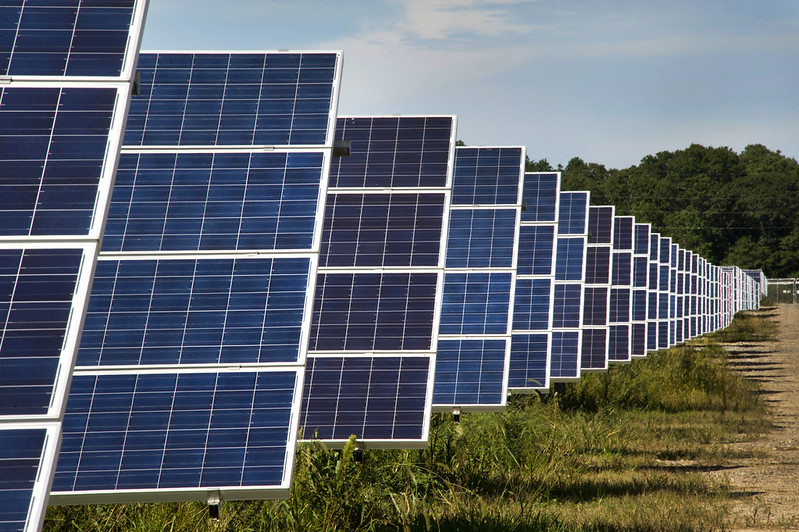Renewable Energy: Proceed But With Caution

Renewable Energy: Proceed But With Caution
Alberta conservation organizations recently sent the following general recommendations to the Government of Alberta on a number of critical issues concerning land use and renewable energy in Alberta.
Need to accelerate and grow renewable energy
Addressing the climate crisis requires that all economies decarbonize their electricity sources as rapidly as possible. Alberta has a stated goal to achieve 30% renewable energy generation by 2030. It is in the public interest to accelerate and increase the amount of renewable energy generation in Alberta. Increasing renewable energy will provide benefits by lowering costs to consumers, generating revenues for landowners and municipalities, and producing employment opportunities. Diversifying energy sources also improves energy security through reducing reliance on one sector. Pembina’s report Zeroing In demonstrated that by 2035, growth in wind, solar and existing hydroelectric generation could supply 45-58% of the province’s electricity demand. During this time, Alberta would increase its wind and solar fleet by three to five times their current combined installed capacity. Alberta needs to proactively plan for this level of growth.
Complete overdue regional planning under the Alberta Land Stewardship Act
Alberta committed to completing land use planning across Alberta as part of the Land Use Framework in 2008. Regional planning is important to establish long-term sustainable development and accounting for cumulative effects in a region. Fifteen years later, five out of seven of Alberta’s land-use planning regions do not have completed land-use plans, and the completed land use plans have reached, or are approaching, their 10-year review. The North Saskatchewan regional planning process commenced in 2014 and appears to be stalled. Additionally, the South Saskatchewan regional plan does not provide direction on where renewable energy development should be prioritized and failed to adequately protect habitats, particularly native grasslands. These delays and shortcomings in land-use planning must be addressed.
Address gaps in Alberta’s protection of nature
The two Alberta natural regions where renewable energy development is most likely to expand are highly underrepresented in protected areas, having the lowest percentages of conserved land in the province. Only 1.25% of the Grasslands natural region and 0.93% of the Parkland natural region have been conserved in legislatively protected areas in Alberta.
British Columbia, Yukon, Manitoba and Quebec have all committed to protect 30% of their land area by 2030. Nova Scotia has signed a Nature Agreement with the Government of Canada to ensure conservation of 20% of Nova Scotia by 2030. In comparison, only around 15% of Alberta is protected, with over 8% in National Parks. Progress on establishing protected areas appears to have stalled in Alberta and is out of step with the expectations of Albertans around the protection of nature.
190 countries signed the landmark agreement at COP15 in Montreal in 2022, that committed them to protect 30% of the landscapes in their territories by 2030. Alberta cannot be seen as a leading jurisdiction in responsible energy development without embracing and acting on this goal.
Need for consistent and fair treatment across all land uses
We support fair, consistent, and equivalent treatment of all land uses, including the renewable and non-renewable energy sectors, mining, forestry, agricultural and urban development. There are many examples of expansion of industrial footprint with negative impacts on nature despite the implications for the reasons cited by the Government of Alberta for pausing renewable energy approvals. Despite a large majority of Albertans not supporting additional coal mining development, Mine 14 near Grand Cache is moving forward and the AER has accepted a new application to develop Grassy Mountain. Despite the critical situation for caribou in the province, new disturbance from oil and gas and forestry continues to be approved. If new regulatory concepts such as “Pristine Viewscapes” are introduced, they should apply to not only renewable energy but also all other land uses, such as oil and gas, mining, and forestry. In addition, the Government of Alberta should move urgently to address the risks associated with unfunded reclamation liabilities for the conventional oil and gas sector, which at $60-120 billion are many orders of magnitude greater than any issue associated with reclamation of renewable energy infrastructure.
We urge the government to move quickly to lift the damaging pause on renewable energy approvals while addressing these critical gaps in Alberta’s approach to natural resource management that apply to all land uses. We request the Government of Alberta commit to completing land use planning, updating Alberta’s approach to conservation to be consistent with increasing expectations for protection of nature, and work to ensure consistent decision-making across all resource sectors.
This post is an excerpt of a letter sent to the government, signed by Pembina Institute, Nature Alberta, Alberta Wilderness Association, Southern Alberta Group for the Environment, and CPAWS
